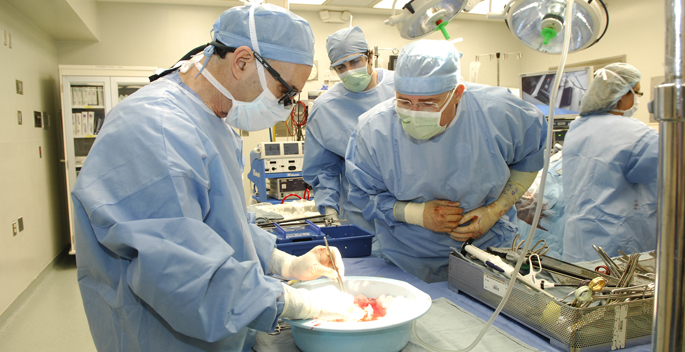by Jessica Pasley
Monroe Carell Jr. Children’s Hospital at Vanderbilt is one of the original pediatric heart transplant programs in the country, and after 30 years, the program continues to rank among the best.
“There were only about six programs in the late 1980s that started transplanting infants and small children,” said Debra Dodd, MD, professor of Pediatrics and medical director of the Pediatric Heart Transplant Program at Children’s Hospital. “We linked together as a group and learned from each other and shared our successes, which helped safely advance the care faster and more effectively than if we did it as individual centers.
“We are now the center for this area in the country for heart transplants. We transplant a higher-risk patient population and continue to have superior outcomes,” she said.
With 40% of transplants occurring in patients younger than 1 year old, Dodd said that age group continues to dominate the volume of cases at the hospital.
Since the hospital’s first pediatric heart transplant was performed in 1987, the program has seen 272 transplantations in children. With a record 22 surgeries in 2019, the program is among the busiest in the country.

The pediatric heart transplant program was officially started in 1989 by Bob Boucek, MD, and Dodd, who was a pediatric cardiology fellow at the time.
According to Dodd, the program was shaped by the early emphasis the team placed on helping newborns with complex congenital heart disease.
One of those patients was Johnson City native Christian Cummins, who was born with hypoplastic left heart syndrome, a birth defect that affects the normal blood flow through the heart.
Christian’s mother, Tami Cummins, recalls the day after she gave birth to her first child. Christian wasn’t given much hope for survival.
At the time, the procedure to help correct the defect was not very successful and transplantation of infants was not as common.
“When I looked at Christian, I couldn’t not do anything,” she said. “We opted for transplant and listed her. They took us by ambulance to Vanderbilt. We could only see her a few minutes every three hours while she was in the NICU.”
Cummins said she and her husband, Kevin, and her mother stayed at the Ronald McDonald House. As time passed, she grew weary.
“I remember lying down and thinking she probably will not get a heart — and then the phone rang. It was Vanderbilt calling.”
At 2 weeks old, Christian received a heart.
“She has done phenomenal,” said her mother. “She has done everything she wanted to do. Her childhood was very normal and very full. She is a fighter.
“I am so very thankful that Children’s Hospital does what they do, because Christian was given life. We’ve had nearly 30 years with her that I would not have had. Vanderbilt was supportive and gave us the positive view of transplant, and she has done far beyond what anyone thought.”
Now 28, Cummins is an attorney in Knoxville.
In 2013, during the fall of her senior year at Carson-Newman University, she had a heart attack that damaged the lower portion of her heart, necessitating a second transplant.
Encouraged to withdraw until a heart could be found, she continued to attend classes.
“I got the call on April 1, 2014,” recalled Christian. “I even asked if it was an April Fools’ Joke. We drove straight to Vanderbilt from Oak Ridge. I got my heart in the early hours of April 2.
“It was a bit hard the first month after transplant, but I graduated in May. I was allowed to walk at graduation and finish my classes in the summer.”
Children’s Hospital has continued to secure high rankings for outcomes with a focus on life after transplantation.
“That has always been the goal of transplantation,” said Dodd. “Especially for children, it’s not just about survival, but giving them a chance at childhood.”
Survival Rates:
- Since 1987 at one year— 87%; 5 years — 78%; 10 years — 68%; 20 years — 55%
- Since 2010 at one year — 94%; 5 year — 89%; 10 year — 77%
Currently the program has 92 recipients who are greater than 10 years post-transplant and 32 patients who are more than 18 years post-transplant.
Over time the program has incorporated innovations to extend transplant options to more children.
- In 2005 the first pediatric ventricular assist device (VAD) was performed. Thirty-four VADs have been implanted since that time.
- In 2013 the first Berlin VAD, specifically designed for small children, was placed. Today, there have been 14 Berlins placed.
- In 2013 the first ABO-incompatible heart transplant was performed. There have been 14 infants transplanted.
The program has three transplant cardiologists, two nurse practitioners, one nurse coordinator and has extended the criteria for heart transplant candidates treated at Children’s Hospital to include complex and higher-risk groups with stable survival rates.














